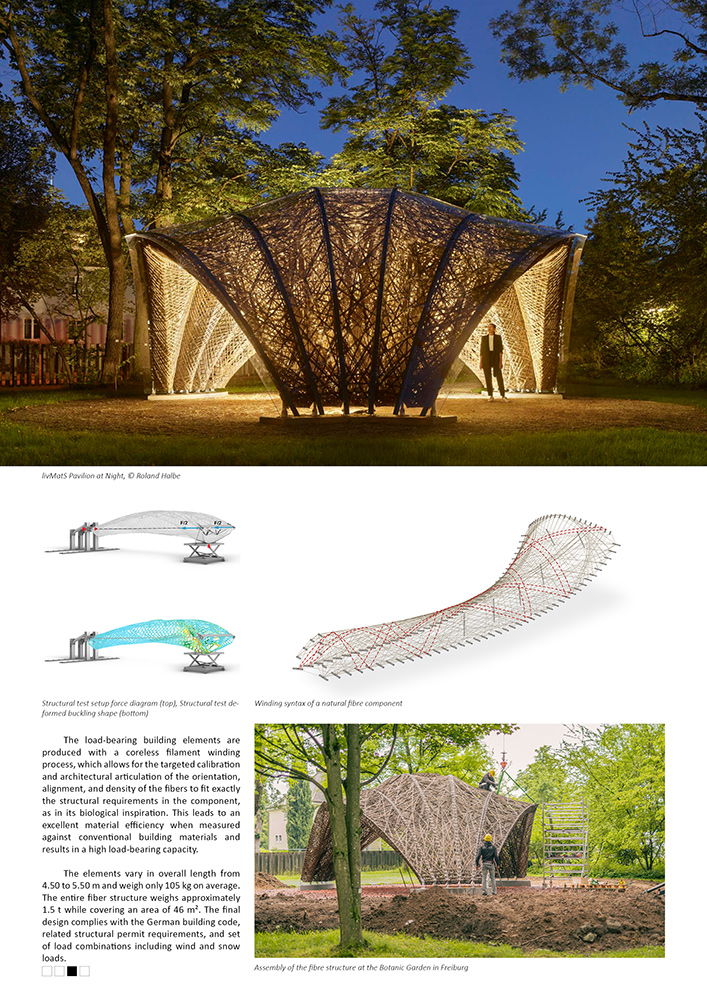Platinum Winner of the Houzee Awards 2023
Architect / Designer:
ICD/ITKE University of Stuttgart
Studio:
Cluster of Excellence livMatS, University of Freiburg and Cluster of Excellence IntCDC, University of Stuttgart
Design Team:
Prof. Achim Menges, Serban Bodea, Niccolò Dambrosio, Christoph Zechmeister, Katja Rinderspacher, Monika Göbel
Prof. Jan Knippers, Marta Gil Pérez, Bas Rongen
ITECH Class of 2020
With support of: Okan Basnak, Yanan Guo, Axel Körner
Student assistance: Matthew Johnson, Daniel Locatelli, Francesca Maisto, Mahdieh Hadian Rasanani, Lorin Samija, Anand Shah, Lena Strobel, Max Zorn
FibR GmbH, Stuttgart
A joint project of the Clusters of Excellence livMatS, University of Freiburg (Prof. Dr. Thomas Speck, Prof. Dr. Jürgen Rühe,) and IntCDC, University of Stuttgart
Project support: Deutsche Bundesstiftung Umwelt, Exolon Group GmbH
Copyright:
© ICD/ITKE/IntCDC University of Stuttgart
Country:
Germany
Located in the Botanical Garden of the University of Freiburg, the livMatS Pavilion offers a viable, resource-efficient alternative to conventional construction methods and therefore represents an important step towards sustainability in architecture. It constitutes the first building ever with a load-bearing structure that is entirely made of robotically wound flax fibre, a material that is fully naturally renewable, biodegradable, and regionally available in Central Europe.
Enabled by a novel combination of natural materials and advanced digital technologies, this pavilion stems from the successful collaboration of an interdisciplinary team of architects and engineers of the ITECH master`s programme at the Cluster of Excellence “Integrative Computational Design and Construction for Architecture (IntCDC)” at the University of Stuttgart and biologists from the Cluster of Excellence “Living, Adaptive and Energy-autonomous Material Systems (livMatS)” at the University of Freiburg.
The bioinspired pavilion showcases how novel co-design processes that account concurrently for geometrical, material, structural, productional, environmental, and aesthetic requirements, together with advanced robotic fabrication techniques applied to natural materials, are capable to generate a unique architecture that is at the same time ecological and expressive. The distinctive, intricate surface appearance of the structural flax elements is evocative of both vernacular examples of latticework and biological systems.








